
Official Edgar Rice Burroughs Tribute and Weekly Webzine Site
Since 1996 ~ Over 15,000 Webpages in Archive
Volume 1462
EDGAR RICE BURROUGHS /
HUGO GERNSBACK CONNECTION
Part I: Intro and Bio
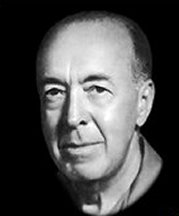

Two great pioneers of American Science Fiction
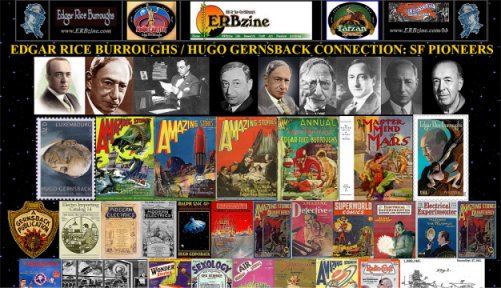




Two ERB stories were featured in SF publishing giant Hugo Gernsback's Amazing Stories magazine -- "Extravagant Fiction Today...Cold Fact Tomorrow." A story that had been first serialized in Blue Book magazine in 1918 and published in hardcover in 1924 by A.C. McClurg as The Land That Time Forgot was reprinted in three parts in the February-April 1927 Amazing Stories issues as: "The Land That Time Forgot," "The People That Time Forgot," and "Out of Time's Abyss."
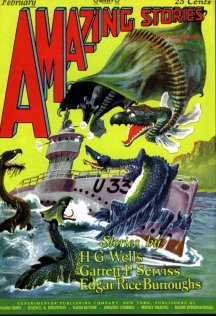
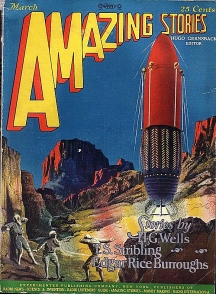
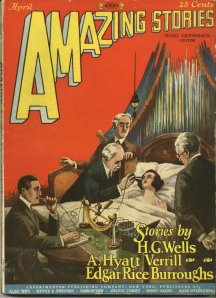
The first and only issue of the Amazing Stories Annual in 1927 featured the entire story of The Master Mind Of Mars.
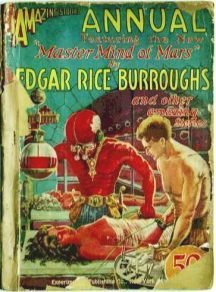 |
Being a Tale of Weird and Wonderful Happenings on the Red Planet by Edgar Rice Burroughs Amazing Annual - Vol. 1 - No. 1 July 1927 ~ 50 cents Experimenter Publishing Co., NY Frank R. Paul Illustrations are featured at: http://www.erbzine.com/mag8/0875.html First Edition Hardcover:
|
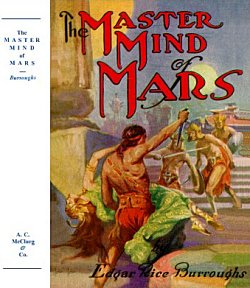 |
The novel was released in hardcover book edition by A. C. McClurg a year later.The Master Mind of Mars as it appeared in the Amazing Annual was reprinted by Vern Coriell's House of Greystoke in 1977. Coriell emphasized the important ERB/Gernsback connection in his introduction:
Reprint Introductions by Vern Coriell: |
|
HUGO GERNSBACK
Recognized by many as being
the Father of Science Fiction
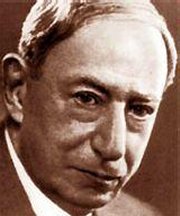
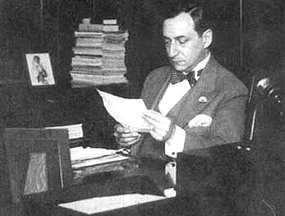
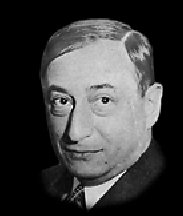
Hugo Gernsbacher was born in Luxembourg on August 16, 1884. As a child in the 1890s he became fascinated by electricity when a handyman at his father's winery showed him how to hook up a battery, wire, and a bell to make the bell ring. This inspired him to pursue a technical education in telephone and electrical communications equipment, and before long young Gernsback was making money by installing door buzzers and intercoms to neighbors' homes. During their school years both Edgar Rice Burroughs and Hugo Gernsback discovered a book that would have a profound influence on each of these SF pioneers for the rest of their lives: astronomer Percival Lowell's book, Mars As the Abode of Life. This book started Gernsback on a lifelong quest in which he speculated on the nature of life and civilization on Mars.
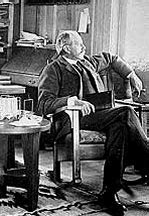
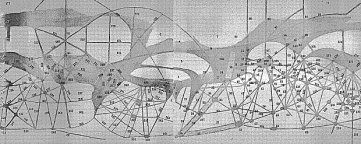
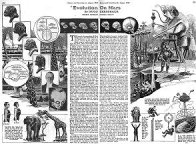
He learned English at a Brussels boarding school, which allowed him to pore over the writings of Mark Twain and stories of the American West. His voracious reading of works by American authors fueled his dreams of travelling to the New World. After three years of studying electrical engineering at Technikum University in Bingen, Germany, he realized his dream in 1904 by imigrating to New York.
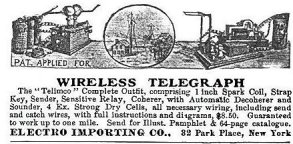
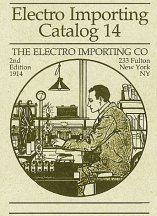
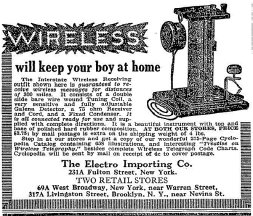
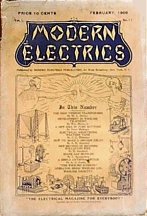
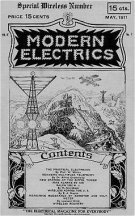
His avid interest in electricity, radio and inventions led him to form the Electro Importing Company and by 1906 he was marketing the Telimco Wireless Telegraph for $8.50 - an invention that is considered to be the very first home radio set. In 1908 the Electro company catalogue that offered radio equipment by mail order evolved into his first magazine, Modern Electrics. It is believed that the term "television" first appeared in the December 1909 issue of Modern Electrics in Gernsback's article: "Television and the Telephot."
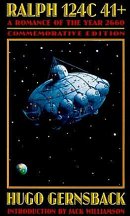
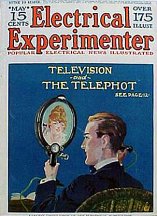
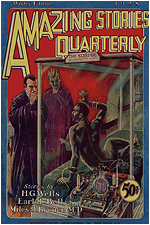
In 1911, the same year that Burroughs wrote his first novel, A Princess of Mars, Gernsback serialized his novel, Ralph 124C41+: A Romance of the Year 2660, a gadget tale that revealed his overriding interest in science fiction as a vehicle of prediction. It is considered by many to be the first pure science fiction novel. The story met with great success so Gernsback continued to publish science fiction in his magazine featuring many scientific adventures of the fictional Baron Munchausen. Realizing that speculative fiction with an emphasis on science needed a special name he coined the term "science fiction" when his own preferred term "scientification" was ignored (Forrest J. Ackerman is reputed to have come up with the term "sci-fi").He went on to publish a long line of groundbreaking magazines. In 1913 he began Electrical Experimenter, which became the famous Science and Invention in 1919, and in 1920 he began Radio News -- a reflection of interest in this new invention. This was followed by Practical Electrics, Radio Review, Wonder Stories, and a host of others that ran into the 1960s (see the Gernsback Bibliography)
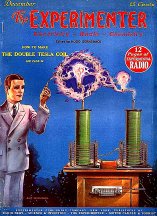
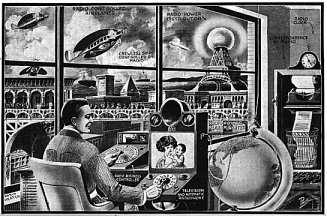
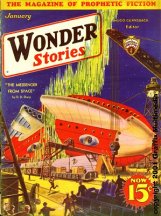
As publisher of Modern Electrics and Electrical Experimenter he drew the attention of such scientists as Guglielmo Marconi, Robert Goddard, Reginald Fessenden, Thomas Edison, and ERB's inspiration of 20 years earlier, Nikola Tesla, the mastermind of electricity. At every chance he bombarded them with ideas from his boundless imagination. His all-consuming passion was the development of radio-related devices but he had many other grandeous schemes and predictions most of which he wrote about with accompanying illustrations in his magazines:
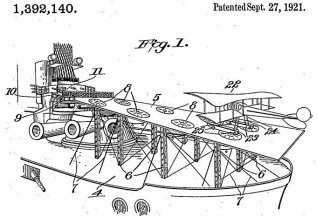
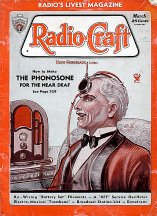
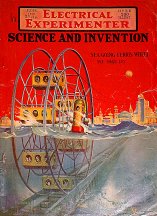
Despite his progressiveness. . . perhaps because of it . . . he was very skeptical of pseudo-scientific and mystical devices, superstition, psychics and astrology. Although not all of his ideas came to fruition or proved to be feasible, his enthusiastic predictions, speculations, and suggestions certainly inspired many future scientists and fiction writers. Some of his predictions that actually did come to pass include:
His enthusiasm for, and insight into science and technology
was amazing. He founded the 500-watt radio station WRNY in 1925 with studios
in New York's Roosevelt Hotel and in 1928 the station began regular television
broadcasts with a mechanical television system, sending out 5-minute broadcasts
to postage stamp-sized screens built by "experimenters" who had built similar
machines from instructions in Gernsback's Radio News.
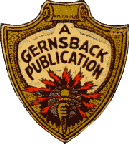
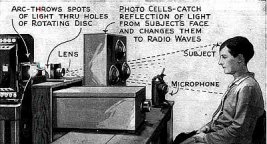
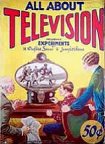
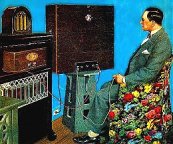
He was in awe of Tesla's genius, whose ideas he viewed as the salvation of mankind. He even commissioned to have a death mask made following the scientist's death. He then published photos of the mask in Practical Electronics and kept the memento in a revered spot in his office. The mask is now in the Tesla Museum in Belgrade.
His later magazine publishing ventures included: Radio Craft -- the first radio magazine in the world, Radio-Electronics, and Amazing Stories for which he edited 37 issues from April 1926 until 1929 with the motto, "Extravagant Fiction Today...Cold Fact Tomorrow." The first issues featured reprints of stories by Edgar Rice Burroughs, H. G. Wells, Jules Verne, Edgar Allen Poe, and lesser-knowns such as A.A. Merritt and Ray Cummings. Gernsback Publications' most popular artist was Frank Rudolph Paul, whose technologically futuristic creations were perfect fit for the covers of these scientific magazines. From 1913 to well into the '30s Paul was assigned the art on hundreds of covers and interiors. Paul's art is well represented in the bibliography section of this article.
By early 1929, Gernsback's Experimenter Publishing company had grown into a profitable million-dollar enterprise. Amazing Stories alone was selling 100,000 copies per month, with some issues soaring to 200,000. Gernsback and his staff were paid well with Hugo himself getting a weekly salary of $1,045; his brother Sydney Gernsback, the company's treasurer, received $750 a week. Gernsback usually paid authors only half a cent per word, which was what many other pulp publishers of that time were also paying but this policy created some complaints because there was no place else for his "science fiction" authors to go. In 1929 the Great Depression sent his Experimenter Publishing Company into bankruptcy and forced the sale of his publishing empire and radio station.He then founded the Stellar Publishing Corporation and started his second publishing empire with Science Wonder Stories and Air Wonder Stories followed by Amazing Detective Tales. Gernsback's success with SF stories opened the floodgates and competitors were quick to notice and respond: Astounding Stories, Miracle Stories, Scoops, Planet Stories, Startling Stories, and more followed, including popular characters such as ERB's creations, Buck Rogers and Flash Gordon in story, comics, and film.
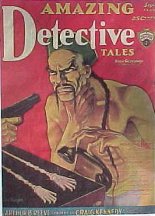
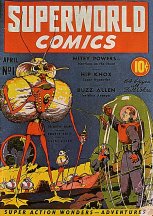
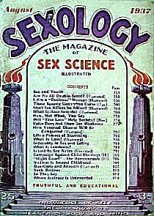
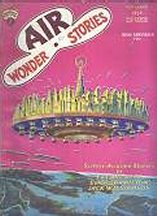
Throughout his life he went on to publish many a wide variety of other magazine titles, including three issues of the early science fiction comic Superworld Comics in 1939, Sexology and in 1953 his last magazine, Science Fiction Plus. His Radio-Electronics Magazine celebrated 50 years of publication in 1958.
In 1953 he was awarded the "Officer of the Oaken Crown" by Grand Duchess Charlotte of Luxemburg. Gernsback had married three times: Rose Harvey in 1906 (one daughter, Madelon and one son, Marcellus Harvey Gernsback, survived by his widow Carol Ann Gernsback), Bertha in 1921 (two children, Joselyn and Bertina) and Mary Hancher in 1951 (no children). In recognition of his contribution to the world of science fiction the annual awards presented to the best in science fiction bear his name: Hugo. He was awarded a special Hugo in 1960. He is a member of the Science Fiction Hall of Fame, as well as the Consumer Electronics Association's Hall of Fame. He is noted for having sponsored the SF League, one of the first fan organizations. Hugo's papers were donated to Syracuse University. A few personal items were sent to the Consulate of Luxemborg in 2006 when they named a street in his name. A postage stamp was also done at that time.
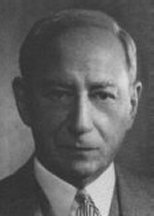 |
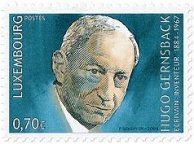
Commemorative Stamp Luxembourg |
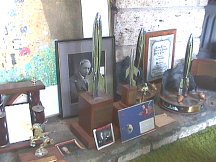
Forrest Ackerman Hugo Collection & Gernsback Photo at Ackermansion |
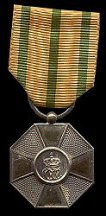 |
Those who had the good fortune to meet Hugo Gernsback were impressed by the energy, cultivation and flair of this tireless crusader for science and imaginative thinking. He owned a vast collection of shirts and ties from Sulka and Charvet, used a toilet water of splendid fragrance and wore suits tailored in Rome and Bond Street. He was an art collector, a world traveller and a connoisseur of champagnes and fine wines. He spoke German, French, English and the patios of Luxembourg with equal facility and authority. The interests of this complex man were mirrored in the plethora of magazine publications he produced:
Hugo Gernsback died August 19, 1967 at New York. His
body was given to Cornell's medical college. His obituary, as it appeared
in the New York Times, follows:
|
|
Science and Invention Larger Cover Images PulpWorld.com The Man Who Invented the Future by Michael A. Banks Magazine Art Theme song from Empire of the Air Air Wonder Stories Covers and Contents Hugo Gernsback Papers at Syracuse University Library Magazines Published by Hugo Gernsback Consumer Electronics Hall of Fame Frank Paul Gallery Tales of Future Past David Szondy Links |
Hugo Gernsback's Forecast Science Fiction E-zine "The Electronic Patient" "The Great Paradox" "Can Computers Think?" "Voice From the Future" "Ralph 124C 41+" Chap. 3 Ultimate World in 12 Chapters Plus much more in the Back Issues Section Our thanks to Carol Ann Gernsback,
|
|
|
|
|
|
|
|
|
|
|
|
|
|
|
|
![]()
![]()
![]()
![]()

![]()
BILL
HILLMAN
Visit
our thousands of other sites at:
BILL
AND SUE-ON HILLMAN ECLECTIC STUDIO
ERB
Text, ERB Images and Tarzan® are ©Edgar Rice Burroughs, Inc.-
All Rights Reserved.
All
Original Work ©1996-2006/2022 by Bill Hillman and/or Contributing
Authors/Owners
No
part of this web site may be reproduced without permission from the respective
owners.